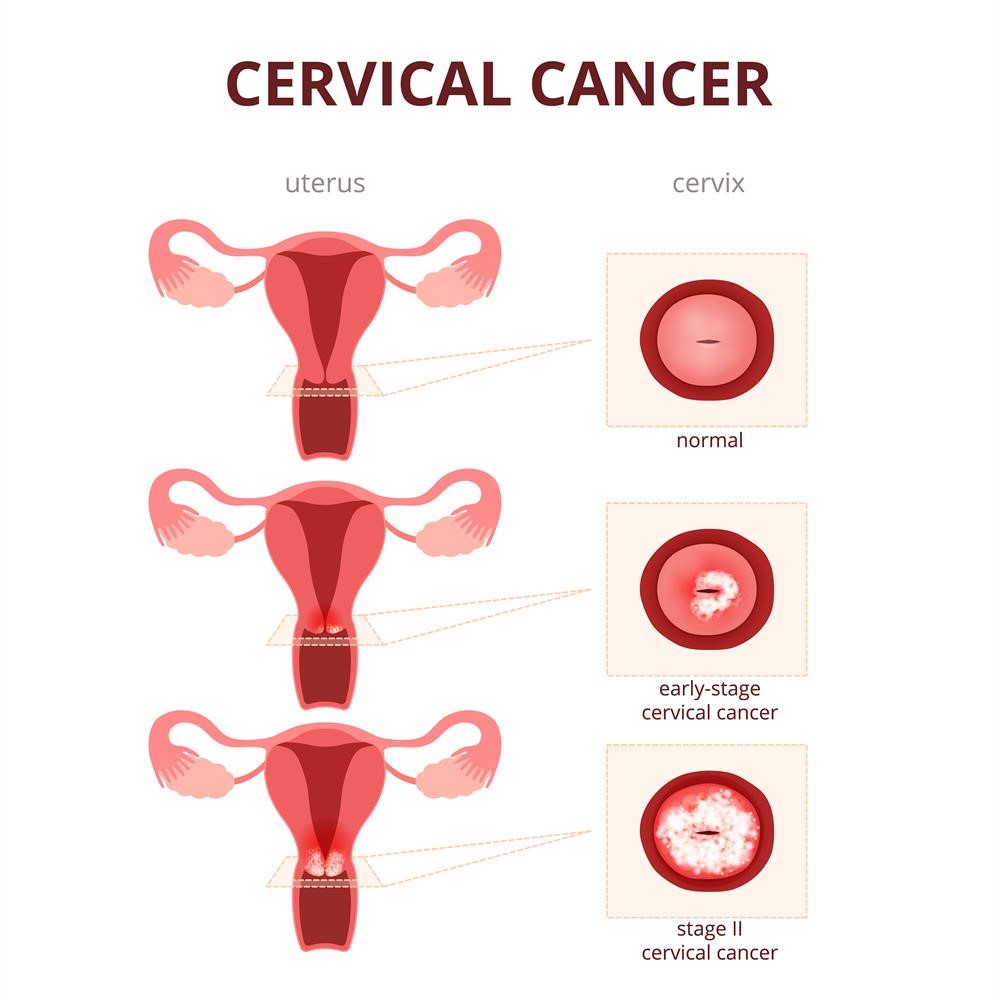Cervical cancer is a type of cancer that occurs in the cells of the cervix — the lower part of the uterus that connects to the vagina.Various strains of the human papillomavirus (HPV), a sexually transmitted infection, play a role in causing most cervical cancer. When exposed to HPV, the body's immune system typically prevents the virus from doing harm. In a small percentage of people, however, the virus survives for years, contributing to the process that causes some cervical cells to become cancer cells.You can reduce your risk of developing cervical cancer by having screening tests and receiving a vaccine that protects against HPV infection.

- Early-stage cervical cancer generally produces no signs or symptoms.
- Signs and symptoms of more-advanced cervical cancer include:
- Vaginal bleeding after intercourse, between periods or after menopause
- Pelvic pain or pain during intercourse
- Watery, bloody vaginal discharge that may be heavy and have a foul odor
Causes
Cervical cancer begins when healthy cells in the cervix develop changes (mutations) in their DNA. A cell's DNA contains the instructions that tell a cell what to do. Healthy cells grow and multiply at a set rate, eventually dying at a set time. The mutations tell the cells to grow and multiply out of control, and they don't die. The accumulating abnormal cells form a mass (tumor). Cancer cells invade nearby tissues and can break off from a tumor to spread (metastasize) elsewhere in the body. It isn't clear what causes cervical cancer, but it's certain that HPV plays a role. HPV is very common, and most people with the virus never develop cancer. This means other factors — such as your environment or your lifestyle choices — also determine whether you'll develop cervical cancer.
Types of Cervical Cancer
The type of cervical cancer that you have helps determine your prognosis and treatment. The main types of cervical cancer are: Squamous cell carcinoma. This type of cervical cancer begins in the thin, flat cells (squamous cells) lining the outer part of the cervix, which projects into the vagina. Most cervical cancers are squamous cell carcinomas. Adenocarcinoma. This type of cervical cancer begins in the column-shaped glandular cells that line the cervical canal. Sometimes, both types of cells are involved in cervical cancer. Very rarely, cancer occurs in other cells in the cervix.OneSmarterHealth is a pre-eminent cancer portal which helps you to connect with the best cancer consultants from the top 10 cancer hospitals in the USA. By clicking directly, you will get a second opinion and online consultation from the reputed oncologists in the USA.
So, what are you waiting for? Visit the website of OneSmarterHealth and connect with them for a second opinion from an US-based doctor. Your one simple step can bring a smile to your loved ones.
